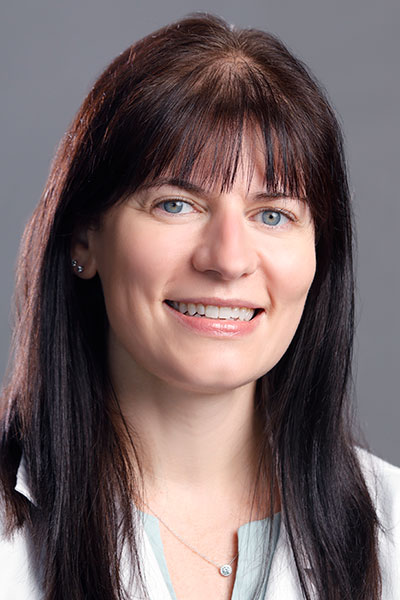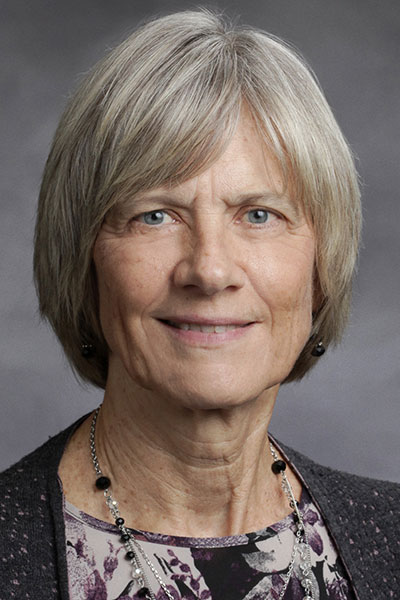Training in pulmonary, critical care, and sleep medicine is good preparation for clinical practice, but with so many niches in chest medicine, no one can truly know it all. A series of problem-based learning sessions at CHEST 2024 will offer attendees interactive and collaborative opportunities to gain a deeper understanding of the real-world clinical issues they might encounter.
All problem-based learning sessions will be held in Room 203 of the Boston Convention & Exhibition Center and require an additional fee at registration. A full list of these sessions can be found in the CHEST 2024 online schedule.
Peripheral Nodule Diagnostics

“When you see something like a peripheral lung nodule, you know that, statistically, it’s most likely benign,” said Christina Dony, MD, Associate Professor of Pulmonary Diseases and Critical Care at the University of Rochester. “You also know that there’s a small percentage that are malignant—and nobody wants to miss a lung cancer.”
A systematic, evidence-based approach to this clinical dilemma is critical to ensure early detection and diagnosis of lung cancer while avoiding overtesting. Dr. Dony will lead participants through these strategies on Monday, October 7, at 11 am ET.
Multiple risk calculators can help assess peripheral lung nodules. But which calculator for which patient? For nodules that are not low-risk, guidelines recommend tissue biopsy. But which approach?
CT scan-guided transthoracic biopsy has historically offered the highest diagnostic yield, Dr. Dony said. Electromagnetic navigational bronchoscopy has fewer complications, while robotic-assisted bronchoscopy with 2-D fluoroscopy and radial endobronchial ultrasound have improved diagnostic yield. Robotic bronchoscopy plus cone-beam CT scan has diagnostic yields potentially comparable with transthoracic biopsy with fewer complications.
Personalized Sleep Apnea Therapy and Adherence

Not all sleep disorders are sleep apnea and not all sleep apnea is obstructive.
“There is also central sleep apnea, and some people have a bit of both,” said Nancy Collop, MD, Master FCCP, Professor of Pulmonary, Allergy, Critical Care, and Sleep Medicine at the Emory University School of Medicine, and Director of the Emory Sleep Center.

Dr. Collop and Anessa Das, MD, FCCP, Professor of Pulmonary, Critical Care, and Sleep Medicine at The Ohio State University, will lead participants through considerations for personalized therapy and adherence on Monday at 8 am.
“It’s easy to say, ‘Yes, you have sleep apnea, [and] we’re going to put you on a CPAP (continuous positive airway pressure),’” Dr. Das added. “This problem-based learning session will take it to the next level to identify patients that might not be the most appropriate for CPAP.”
Some patients cannot use CPAP due to posttraumatic stress syndrome, Dr. Collop noted. A global recall of some Philips Respironics CPAP and other ventilatory devices has also affected treatment, and supply problems made it difficult for patients to get CPAP machines. Some drug trials show benefit for sleep apnea, and recent advertisements for surgically implanted devices are hard to miss.
“The nuances of who might benefit from a dental appliance, who might need weight loss, different modes of CPAP, other devices—it’s not as straightforward as ‘Everybody gets a CPAP, and we’ll see you later,’” Dr. Collop said.
Using CPET to Solve Your Difficult Cases

Cardiopulmonary exercise testing (CPET) is another tool that is commonly misunderstood.
“Pulmonologists don’t have as much day-to-day experience with CPET as they do with lung function tests,” said Zachary Fulkerson, MD, PhD, Assistant Professor of Clinical Medicine at Indiana University School of Medicine. “The nuances of interpretation, of practically applying the results, are some things people find challenging because they don’t use it as regularly.”
Dr. Fulkerson and Matthew Hegewald, MD, FCCP, from the University of Utah School of Medicine, will guide participants through these difficult cases on Wednesday, October 9, at 11:15 am.
CPET can be helpful when lung function testing or echocardiogram fail to identify a cause for exercise intolerance or dysfunction, Dr. Fulkerson said.
“For patients with nondescript symptoms, CPET can help shine a light on pathologies you might not consider otherwise,” he said. “Cardiologists tend to focus on cardiac-related diagnoses; pulmonologists on pulmonary-related diagnoses. CPET looks at both, and other parts of the body, to tell you where the pathology is and where to look harder.”
UPDATE (September 30): Advance registration has now closed. Please inquire about problem-based learning session availability on site in Boston at the registration desks during open hours.
Join us at CHEST 2025
Save the date for the next Annual Meeting, October 19 to 22, 2025, in Chicago. CHEST 2025 will explore the latest advancements in pulmonary, critical care, and sleep medicine, with a focus on innovation and the future, just as the city itself embodies progress and reinvention.
